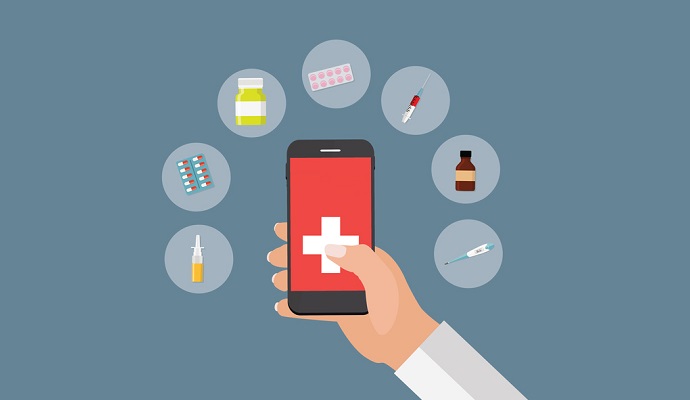Telehealth for Occupational Health Benefits Both Employee and Employer
Concentra's telehealth service, launched in 2017, is seeing more than 8,000 virtual visits a month, and helping both the injured worker and the company find better health outcomes.

Source: ThinkStock
- America’s businesses have always run on the mantra that employee health is important to the company’s bottom line, and that lost work time means lost productivity. Now they’re beginning to see that telehealth can play an important part in those outcomes.
Businesses that used to send an injured employee to the local doctor are now using telehealth to bring the doctor to the employee, reducing travel and out-of-work expenses and improving – even enhancing – recovery time. The effect on both the company’s health and the employee’s health and wellness is quite noticeable.
Telehealth “is often the right use case in our space,” says Ann Schnure, vice president of telemedicine at Concentra, one of the largest occupational health providers in the country. “A lot of the injuries are low acuity, and people need to see the right kind of clinician for that injury.”
Many hospital emergency departments and primary care doctors, she notes, don’t understand the occupational health space or worker’s comp injuries. As a result, employees can wind up going to the wrong place for care before they go to the right place.
The Texas-based company, with 517 medical centers across the country and another 150 clinics at customer sites, offers an around-the-clock connected health and rehabilitation service on the eVisit Virtual Care platform. Launched in June 2017, Concentra’s program conducts more than 8,000 virtual care visits a month, handling everything from scheduling and intake through payment and discharge, along with the actual virtual care visits.
Schnure says the occupational health landscape isn’t easy, with different rules and regulations in almost every state. And many aren’t up to speed on connected health.
“So many states are silent on telehealth,” she says. “And every state has its own forms to fill out. We need more transparency and clarity in the regulations” to allow telehealth to assist or even take the place of in-person visits, particularly when they require the injured employee to take so much time off from work to find a doctor, schedule a visit, see that doctor and start treatment.
It’s not a small problem. According to the Bureau of Labor Statistics, private industry employers reported 2.8 million workplace injuries and Illnesses in 2019, or 2.8 cases for every 100 full-time employees. That comes out to roughly $1,100 in costs per employee - $42,000 per worker who needs medical consultation – or $171 billion in total costs.
The coronavirus pandemic has added to those costs, giving employers and employees fewer options to seek in-person treatment for a work injury. But it has also raised telehealth’s profile, a significant event in an industry with a reputation for being conservative.
Schnure says the occupational health space is ideal for a simple telemedicine setup, and that businesses and care providers wanting to use technology sometimes invest too much in the equipment. A basic audio-visual telemedicine platform works best, rather than an asynchronous (store-and-forward) service, and today’s smartphone cameras are as good as any high-priced mHealth peripheral or wearable for doing what’s needed.
“Musculoskeletal injuries are the bulk of what we see,” she says, “along with abrasions, burns and rashes. The right use case for this space is low-acuity.”
The key to delivering care, she says, is getting the employee in front of the right care provider as soon as possible, so that the injury is diagnosed and a treatment plan is begun as quickly as possible.
“It’s certainly not for every injury and it’s not for every patient, but it’s a great tool to have,” she adds. “It’s another tool in the toolbox for us.”
Aside from the myriad of state laws governing the occupational health and worker’s comp space, the barriers are familiar. Employers and employees may be reluctant to use telehealth if they’ve never used it before, and the provider needs to be sure there’s enough broadband capacity to handle the case. They may also need on-demand interpreter services, and a HIPAA-compliant platform for documenting consent, and a means of accessing the patient’s health records to facilitate continuity of care and keep the PCP in the loop.
Not to mention the need to have licensed providers for every state in which the service is offered.
But the benefits are also obvious, to both the employee and employer. Quick and effective access to healthcare contributes to a happier workplace, and that contributes to the bottom line.
